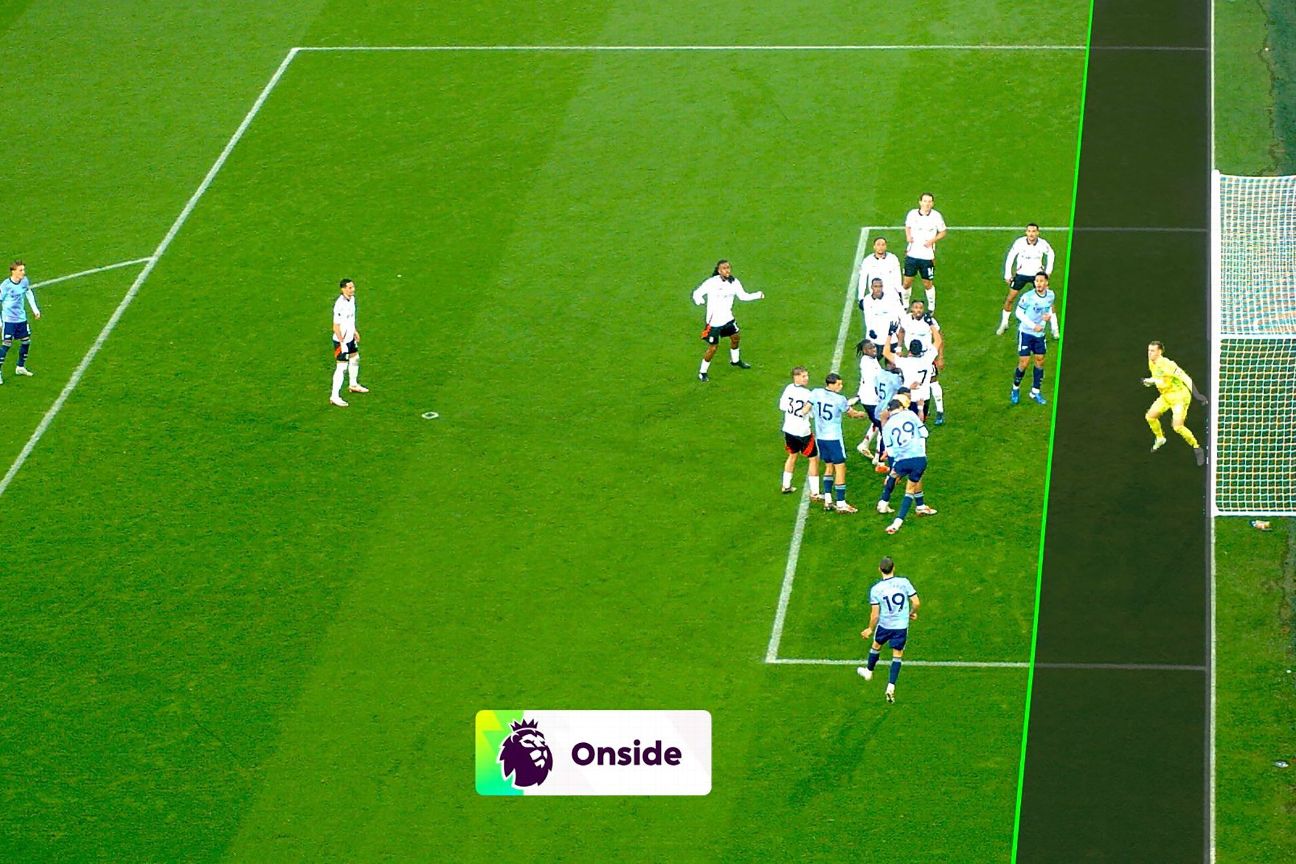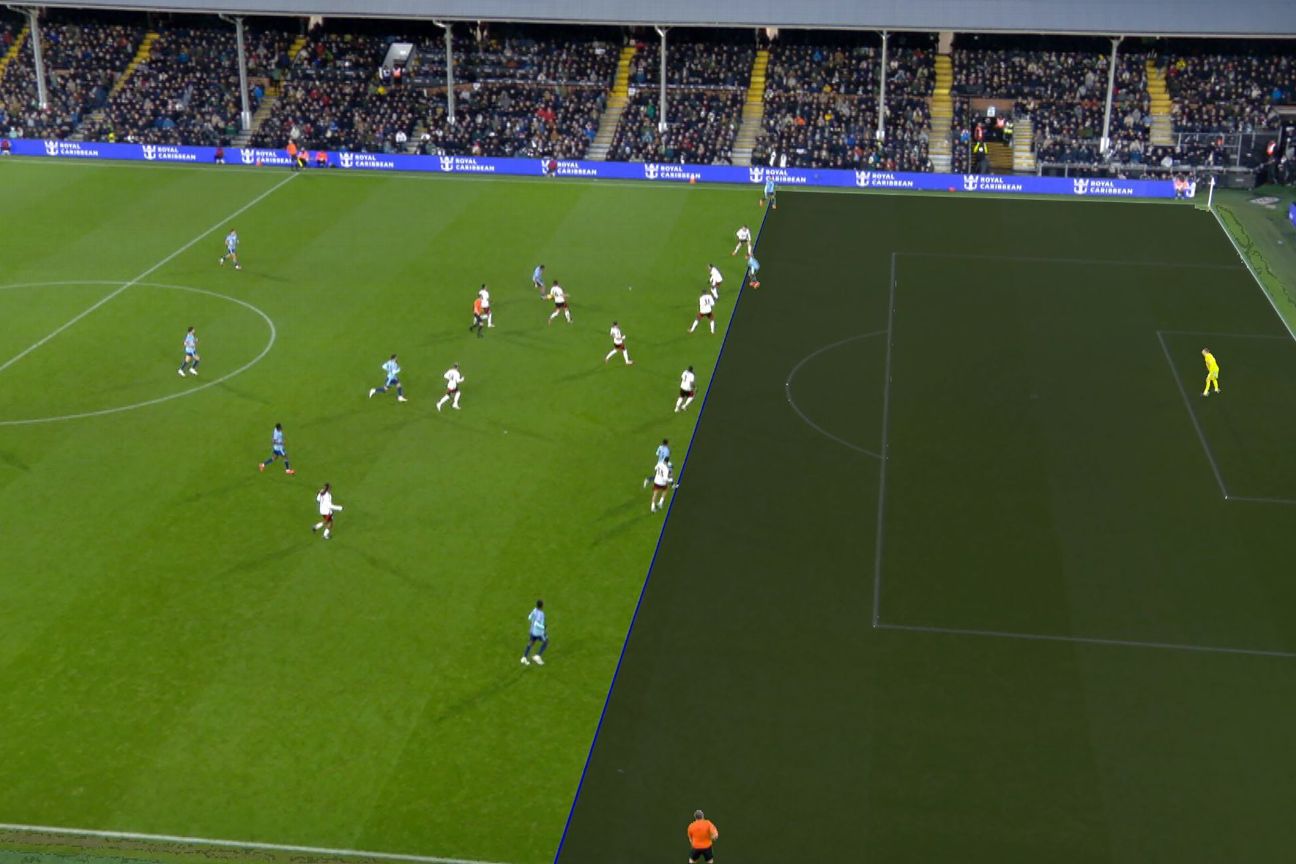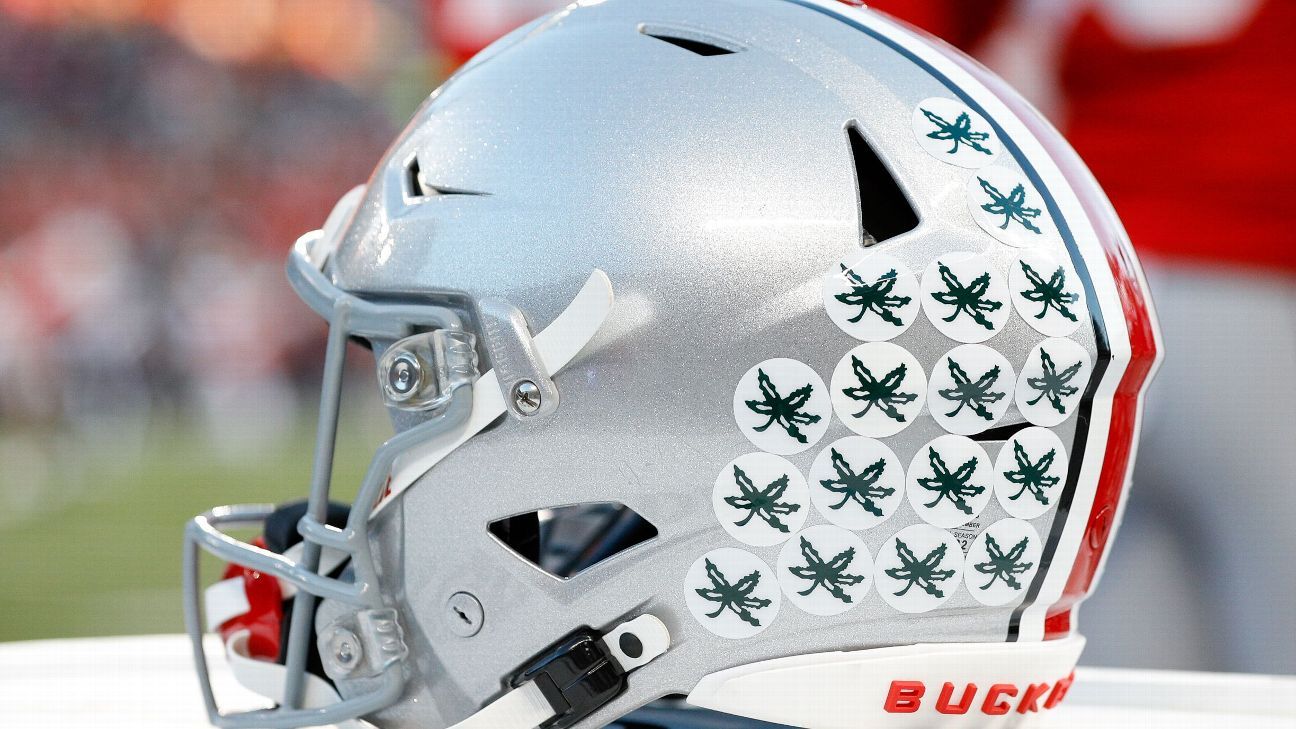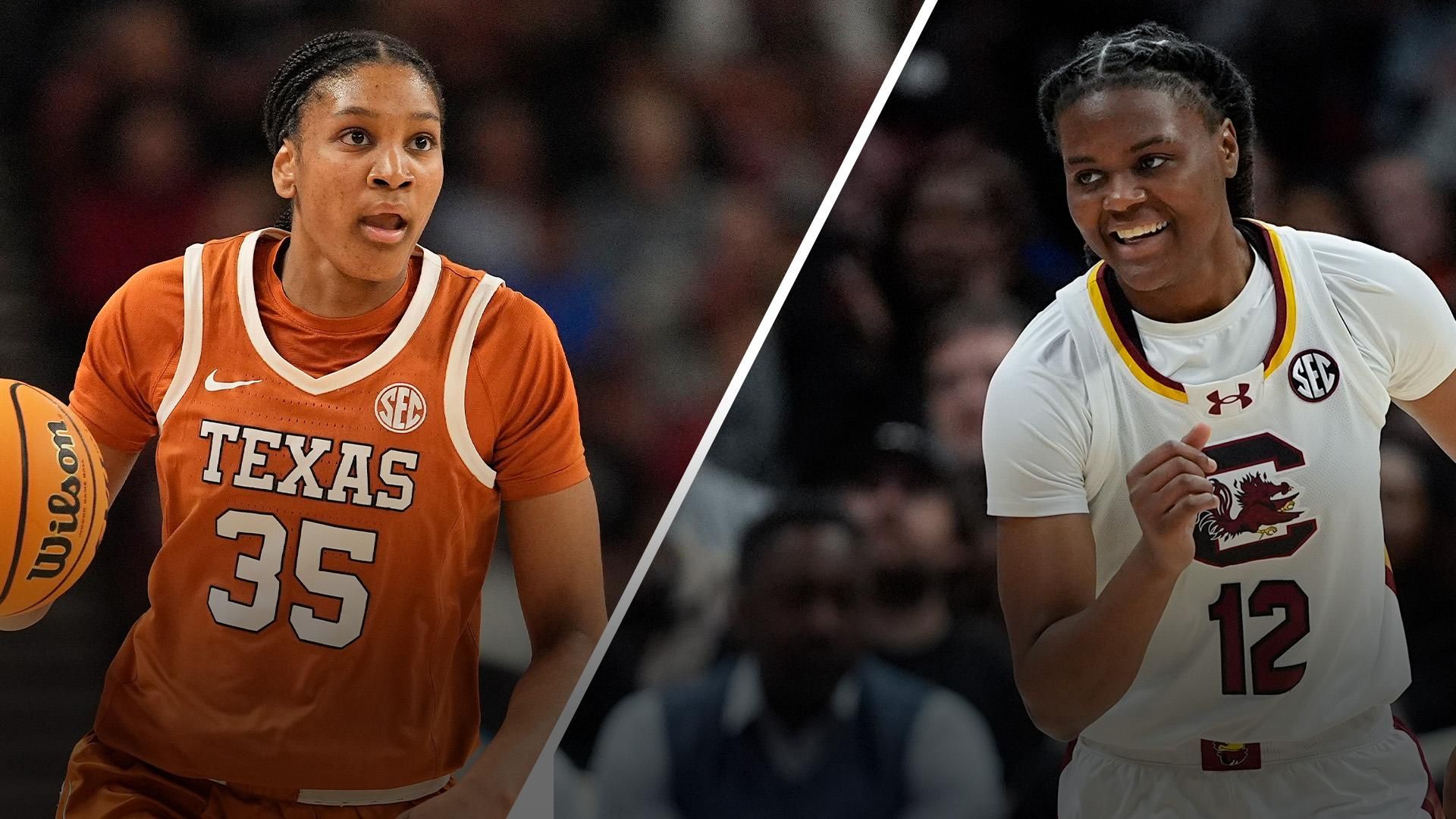
Dale Johnson, General Editor, ESPN FCDec 9, 2024, 07:06 AM ET
Video Assistant Referee causes controversy every week in the Premier League, but how are decisions made, and are they correct?
After each weekend we take a look at the major incidents, to examine and explain the process both in terms of VAR protocol and the Laws of the Game.
In this week's VAR Review: Dejan Kulusevski and Moisés Caicedo were both the subject of red-card reviews but escaped -- was that the right outcome? Plus Arsenal's onside goal and Ipswich Town's frustration against AFC Bournemouth.
Tottenham 3-4 Chelsea
Possible red card: Kulusevski on Lavia
What happened: Romeo Lavia was knocked to the ground in the first minute of first-half stoppage time on a challenge from Dejan Kulusevski. Referee Anthony Taylor gave the free kick against the Tottenham Hotspur player but took no disciplinary action. Should the VAR, Jarred Gillett, have advised a red card, with Kulusevski catching Lavia on the back of the head with his elbow?
VAR decision: No red card.
VAR review: When you look at the context of the incident, and missed red cards for use of the arm last season, it's difficult to see how this didn't go to a VAR review. This could be violent conduct for the use of the elbow, or serious foul play for challenging for the ball in a way which endangered the safety of an opponent
Lavia received the ball a few yards outside the D, and Kulusevski ran in at pace to try to intercept the pass. He did so with both arms raised, but his right arm was at an angle which left his elbow out.
Kulusevski had a clenched fist with his right hand, one of the tests the VAR should apply to assess the use of force. (Notably, Kulusevski's left hand isn't clenched.)
Last season the Premier League's Key Match Incidents Panel ruled there had been two VAR errors for missed red cards with the use of the arm. One of those was Newcastle United midfielder Bruno Guimarães for his challenge on Arsenal's Jorginho. Guimarães ran in from a longer distance and brought his arm down on the opponent, though the KMI Panel only voted 3-2 that it was a missed VAR intervention.
Fulham's João Palhinha also escaped a red card after he caught Brighton & Hove Albion's Pascal Groß on the head with an elbow, which is a closer comparison to Kulusevski. Again, the KMI Panel voted 3-2 that the VAR should have stepped in.
Verdict: The VAR decided there wasn't enough force in Kulusevski action, perhaps because there was no throwing motion to use the elbow as a weapon. But it was Kulusevski's run into the space of the opponent that created the force. Maybe because Taylor had a perfect view, the VAR felt he had described the incident well so couldn't intervene. But the speed at which Kulusevski came in, with a raised arm, elbow leading with clenched fist should have led to a VAR review for a red card.
Possible red card: Foul by Caicedo on Sarr
What happened: Pape Matar Sarr and Moisés Caicedo challenged for a ball in the 33rd minute, with referee Taylor giving a free kick to Spurs. However, like in the Kulusevski incident, no disciplinary action was taken. This was also checked for a possible red card by the VAR, for serious foul play.
VAR decision: No red card.
VAR review: It's the perfect example of an incident which looks as bad as some other VAR red cards, but in context there isn't the same level of force or intensity for this to go to review. This is clear from the real-speed replays as opposed to pictures.
Sarr got a toe to the ball ahead of Caicedo, which was the cause of him missing it. That wouldn't negate a red card for Caicedo, of course, if the challenge was too strong.
Caicedo made contact on the shin of Sarr, but it was minimal and at the end of the motion of his kick, while both players were positioned in a similar way for the challenge. The Chelsea player should have been booked, but the VAR cannot advise that.
There were two VAR red cards at this stadium last season which look very similar in photos, but have key differences.
Liverpool's Curtis Jones was sent off for a challenge on Yves Bissouma. It was in the same position on the shin, but Jones did so with an angled boot (deemed more dangerous) and made full contact which caused a buckle of the leg (used as an indicator of force.) Neither were present in Caicedo's tackle.
Tottenham's Cristian Romero was also sent off, coincidentally in this fixture. Romero lunged in with a clear level of force above the ankle of Enzo Fernández, who was in a standing position and not challenging in a similar way. There was no justification for how Romero went into the challenge.
Verdict: Jones and Romero are easy VAR red card decisions due to the force and nature of the challenge respectively. All the boxes aren't quite ticked for Caicedo, but any more contact on Sarr and it would have been a VAR red card. At the same time a red card given on the field wouldn't have been overturned.
Manchester United Lisandro Martínez caught Cole Palmer on the knee last month, but due to the low level of contact the KMI Panel unanimously voted it wasn't a VAR red, and will likely do so for this too.
Possible offside: Udogie before Son chance
What happened: Dominic Solanke played a ball around the corner to Destiny Udogie, who appeared to clearly be offside, in the 68th minute. Pedro Neto stopped tracking Udogie expecting a flag. However, play continued and Son Heung-Min ran up behind and told him to leave the ball, picked it up and ran through to shoot wide. Not a decision for VAR, but a goal would have created controversy.
What would the VAR have done?
Two years ago, Manchester United scored a goal against Manchester City when an offside Marcus Rashford ran through on goal, and Bruno Fernandes shouted at him to leave it so he could score. After discussing with his assistant, referee Stuart Attwell gave the goal and the VAR didn't intervene. There were similarities here, and after the Rashford-Fernandes incident referees' chief Howard Webb said that while onside is supportable in law it's better to give offside.
A player cannot be offside just by running to the ball. Often it will be given, but in law that in itself isn't the offence, it has to have an impact on an opponent. Udogie does not attempt to play the ball, and there's no defender close to him.
By not chasing and raising his arm, Neto effectively created the possibility of onside as there was no defender for Udogie to directly impact with his run -- even if in the spirit of the game it feels like it should always be offside.
If Son had scored offside might yet have been given after the officials discussed it, but if it had been onside and gone to VAR we faced another Rashford-Fernandes.
Bonus bit: Why was Bissouma booked for the foul on Caicedo which gave Chelsea their first penalty, but Sarr, who was on a yellow, escaped a caution?
It's about the where the challenge took place, and also the nature of it. The way Bissouma went into his challenge could be considered reckless or DOGSO, which inside the area would be a caution.
In the case of Sarr, he fouled Palmer in the corner of the penalty area when he was facing the touchline, and the challenge wasn't reckless.
Crystal Palace 2-2 Man City
Possible penalty: Challenge by Chalobah on Lewis
What happened: Rico Lewis received a second yellow card in the 84th minute for a foul on Trevoh Chalobah inside the Crystal Palace penalty area. It looked a harsh decision from referee Rob Jones, but were there grounds for a foul the other way -- which would have been a penalty?
VAR decision: No penalty.
VAR review: Chalobah clears the ball out of defence, and as he does so makes contact with the boot of Lewis -- who had come in strongly but did not touch the Palace defender.
The contact from Chalobah was slight, and the challenge wasn't reckless, so it didn't meet the threshold for a VAR penalty -- and that leaves Lewis with no way out of the red card.
Verdict: The VAR's inability to review second yellow cards continues to be contentious, and this may be fifth incorrect second yellow as judged by the KMI Panel. It looks like a lunging tackle, but that was misleading and not enough for a second yellow card.
If a penalty was awarded the second yellow would be removed, but there's another way, too; If there's a review for a penalty, the referee can reject it but also remove the booking for Lewis. That would be through a penalty review, and not a specific review of the Lewis yellow. Once at the monitor the referee is in control of all disciplinary outcomes.
Fulham 1-1 Arsenal
Possible offside: Saliba when scoring
What happened: Arsenal equalised in the 52nd minute when William Saliba scored from close range after Kai Havertz helped the ball back into the six-yard area on a corner routine. It looked very tight for offside, and was checked by the VAR, John Brooks.
VAR decision: Goal stands.
VAR review: With the current offside technology, due to its inaccuracies, the attacker gets a "benefit of the doubt," or "tolerance level" of around 5cm. That's when the line for the attacker and the defender are overlapping, and a single green line is shown.
This can be confusing, however, as that green line is just to the defender. The attacker's line doesn't appear -- because two different coloured lines sat on top of each other wouldn't give a clear representation. At the same time, there being no line to the attacker makes it look strange, unless you know the reason.

For Arsenal's second goal, which was ruled out through VAR, Gabriel Martinelli was well in advance of this tolerance level. (watch here)
Verdict: When the problems with semi-automated offside VAR are finally ironed out, and that's very unlikely to be this season now due to issues with reliability in testing, the "benefit of the doubt" is gone. That's because the inaccuracies are supposed to have gone, and absolute decisions will be made. A goal like Saliba's might well be ruled out.

Ipswich 1-2 Bournemouth
Possible goal: No foul by Delap on Arrizabalaga
What happened: Ipswich thought they had scored a second goal in the 26th minute when Cameron Burgess headed home on a corner routine, but referee Michael Salisbury blew for a foul by Liam Delap on Kepa Arrizabalaga as soon as the ball crossed the line. The VAR, Paul Tierney, checked to see if the goal should be awarded.
VAR decision: No goal.
VAR review: Ipswich boss Kieran McKenna was annoyed that the goal was ruled out, but he can have no real complaints about the on-field decision.
As the corner comes over Delap has both arms around the goalkeeper, completely restricting his movement across the line. This wasn't a striker simply standing his ground so the keeper can't get past him, it was actively preventing him from going with the flight of the ball. It may have been holding for a short time, but this wasn't two outfield players, it was a goalkeeper being held.
Verdict: No chance of a VAR intervention. Indeed, had the goal been given on the field there's every chance the goal would have been ruled out for this foul, while there was another possible infringement with Conor Chaplin holding down Antoine Semenyo and stopping him heading the ball before it got to Burgess.
Some factual parts of this article include information provided by the Premier League and PGMOL.














































